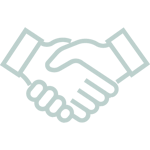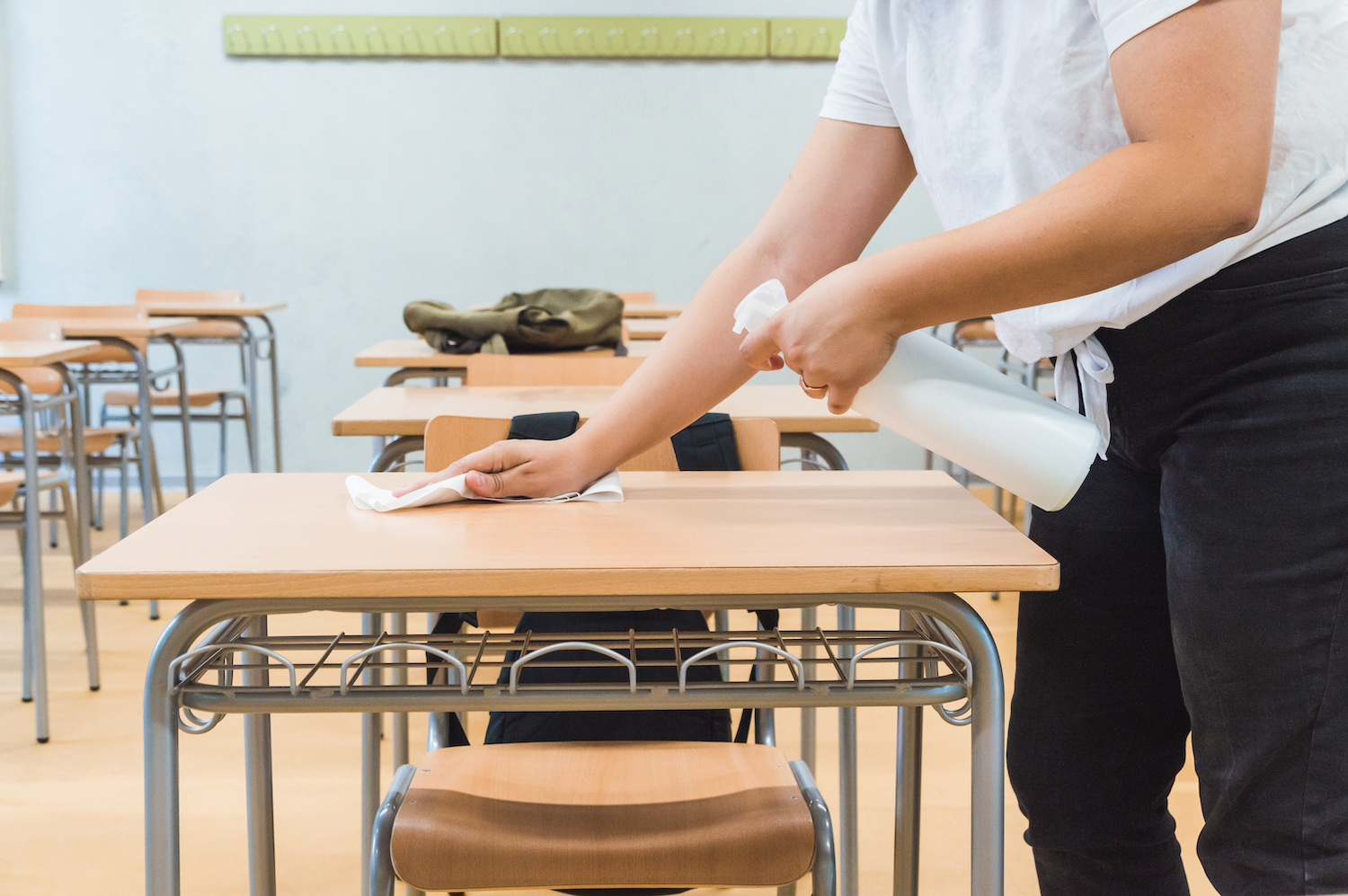Maintaining a clean environment for students and staff is fundamental for any educational facility — from preschool to post-secondary. Creating a clean learning space not only contributes to a healthy and thriving school community, but it can also improve learning outcomes by reducing environmental stressors, helping prevent illness-related absences, and ultimately ensuring both students and faculty can be fully present each day.
As cleaning technologies have evolved over the past several years, cleaning operations have taken a giant leap forward, making it easier than ever for schools to achieve high cleaning standards. Keep reading to learn best practices for cleaning procedures for schools, including the most important elements to include in any school cleaning operations plan.
What Are Cleaning Procedures for Schools?
A school’s cleaning procedures are essentially a set of guidelines, expectations, and routines that define how cleaning tasks are performed within educational facilities — from daily cleaning tasks to deep cleans. A comprehensive cleaning plan will take into account various factors to determine the best course of action, including the types of surfaces, high-traffic areas, and specific cleaning equipment developed for educational settings. Effective cleaning operations also depend on the right supplies to get the job done well — from the right disinfectant to safety gear.
Why Developing Cleaning Operations Matters
Developing standardized cleaning operations is not just about keeping appearances; it's ultimately about creating an environment that’s conducive to learning and well-being. Consistent cleaning operations help minimize the spread of germs and keep debris and allergens at bay, leading to healthier students and faculty — and fewer sick days.
Plus, a clean environment instills a sense of pride among students and staff, fostering a positive atmosphere that encourages productivity and focus.
6 Vital Components of a Cleaning Operations Plan
A robust cleaning operations plan should include several key components that work in harmony to achieve optimal cleanliness. Let's explore these essential elements:
1. Cleaning Supplies
The foundation of effective cleaning operations lies in having the right cleaning supplies on hand to get the job done right. From disinfectants and surface cleaners to mops and vacuum cleaners, your team must choose supplies that align with your specific cleaning needs. Different areas will require different types of cleaning agents, so it's important to assess the requirements of classrooms, hallways, restrooms, and other spaces to ensure that the appropriate supplies are readily available.
For example, classrooms have many high-touch surfaces that can benefit from disinfectant wipes and sprays to quickly eliminate germs between classes. Meanwhile, dust and dirt can quickly accumulate in high-traffic areas like hallways, so it’s important to invest in high-quality floor scrubbing and vacuuming tools that effectively trap particles. In particular, vacuum cleaners with HEPA filters are a must for spaces with carpeting, where allergens linger and directly affect your school’s indoor air quality.
Recognizing that each space has its unique cleaning requirements is essential. Locker rooms, for example, might need specialized odor-neutralizing products, while cafeterias typically require food-safe cleaning products. By thoughtfully selecting supplies tailored to the specific needs of different areas, your cleaning team can work more efficiently while delivering optimal results.
2. Daily Cleaning SOPs
Daily cleaning standard operating procedures (SOPs) serve as a roadmap for maintenance staff members, outlining the tasks that need to be completed each day. This could involve tasks like sanitizing frequently touched surfaces, vacuuming high-traffic areas, emptying waste bins, and maintaining restroom cleanliness.
Empowering your team with clear, concise SOPs helps ensure consistent cleaning practices across the board, no matter who is performing the tasks. And when applied at scale, these SOPs help your team make best use of their time by focusing on higher-value tasks.
With that in mind, creating SOPs can be difficult and time-consuming if you currently lack cleaning documentation. To start, ask your team what tasks they do on a consistent basis and how they accomplish these tasks. Once you’ve collected this information, you’ll find it easier to pinpoint inconsistencies and inefficiencies within your current cleaning operations.
3. Cleaning Technologies
In addition to choosing the right tools and tasks, it’s also important for schools to consider technologies designed for educational facilities that can help them achieve their goals. Cleaning technologies are no longer a novelty in schools. In fact, they’re quickly becoming table stakes for educational facilities as they strive to achieve higher levels of cleanliness with a contracted cleaning workforce.
Innovations like Whiz and the Scrubber 50 Pro from SoftBank Robotics have revolutionized the way schools approach cleanliness, streamlining cleaning operations and even helping schools retain their janitorial staff by offloading the most mundane and time-consuming cleaning tasks.
These autonomous robots are equipped with advanced sensors and AI capabilities that allow them to navigate spaces and clean floors independently. Because the robot is never rushed or bored, routine tasks like vacuuming and scrubbing can be completed thoroughly and consistently every single time, while staff have more time to focus on deep cleaning activities that require a human touch. These robots can also cover large areas in a fraction of the time compared to manual cleaning, making them an invaluable productivity tool for school cleaning operations.
4. Staff Training and Education
Even the most advanced cleaning technologies are only as effective as the team they support. That’s why your cleaning operations plan would not be complete without a plan to train and develop your staff — not just once, but on an ongoing basis.
When staff members understand the proper use of cleaning products, equipment, and technologies, they can perform their tasks more efficiently and effectively. Plus, regular training can help foster a sense of pride in their work and an understanding of their vital role in creating a clean and healthy environment for students and colleagues. As you build out these training programs, be sure they are informed and documented by your SOPs.
5. Data-Driven Cleaning Insights
Today, data is a powerful tool that can revolutionize cleaning operations in schools. It’s an ingredient you can’t afford to leave out. With the power of smart cleaning technologies, schools can gather valuable data and insights into cleaning patterns, occupancy rates, and areas that require special attention. This data-driven approach allows you to make informed decisions about resource allocation, scheduling, and areas that may need targeted cleaning efforts.
For example, Whiz, the commercial robot cleaner, is not just a cleaning device — it's a data collector. Equipped with advanced sensors, Whiz can gather information about foot traffic patterns, high-traffic zones, and peak cleaning times. With our proprietary data and reporting platform, this data can be analyzed to optimize cleaning schedules, allocate resources efficiently, and address cleaning needs where they matter most.
6. Innovation and Continuous Improvement
As the needs of educational facilities evolve, so too must cleaning operations. Schools should continuously assess their cleaning strategies and adapt them to address new challenges and adopt new technologies where appropriate. This might involve incorporating eco-friendly cleaning practices, optimizing cleaning schedules, or exploring additional cleaning solutions to enhance the overall effectiveness of the cleaning operations.
Creating a Deep-Cleaning Regimen
While daily cleaning SOPs are crucial for maintaining day-to-day cleanliness, it's equally important to establish a deep-cleaning regimen. Deep cleaning involves more thorough and less frequent cleaning tasks that target areas that might not receive daily attention. These can include carpets, locker rooms, cafeterias, and other spaces that require occasional but intense cleaning efforts. A well-structured deep-cleaning regimen helps prevent the buildup of dirt, grime, and allergens, contributing to a healthier and more positive learning environment.
As you begin to develop your own deep-cleaning regimen, think about the long-term tasks that you find most often get pushed to the wayside. Then, segment these tasks into monthly, seasonal, and annual initiatives. Breaks between semesters, vacations, and other school closures present the perfect opportunity to slot in cleaning efforts that would otherwise intrude upon students and faculty.
Conclusion
Cleaning standards in schools have never been higher, but there’s also never been a better time to build an effective cleaning operations plan that ensures efficiency, consistency, and overall cleanliness. With the right cleaning tools, technologies, and training, schools can create an environment that fosters learning, well-being, and pride in their students and faculty alike.
Want to see these cleaning innovations in action? Discover how technology reshaped the way Wicomico School District maintains their spaces and ensures a cleaner future for students and staff alike. Watch the video case study here.






